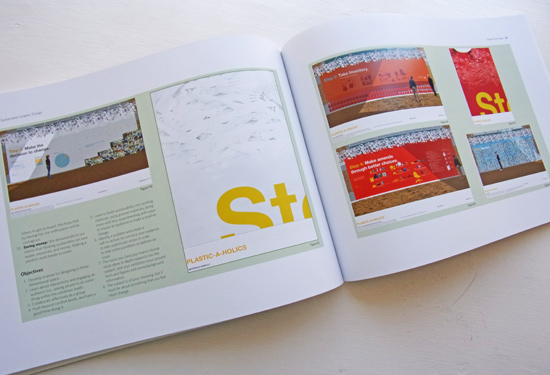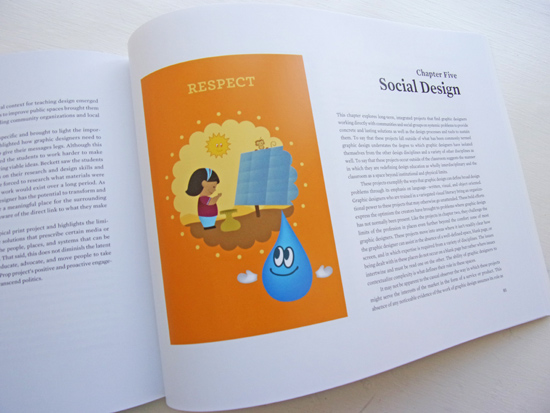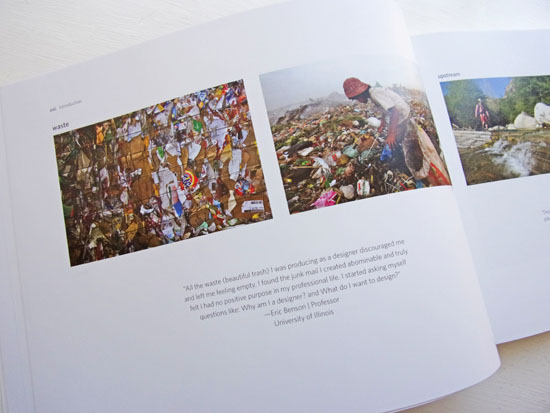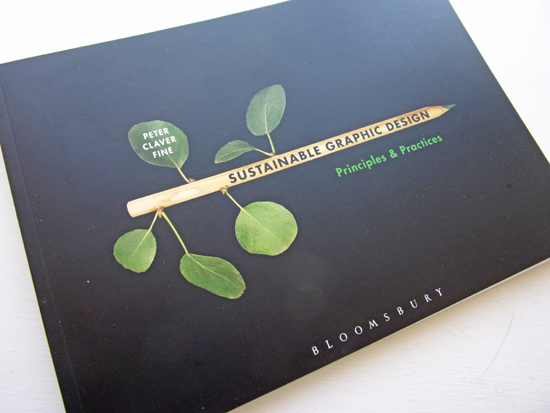Sustainable Graphic Design Principles & Practices – Book Review
Published by Bloomsbury Academic ISBN 9780857850638
Reviewed by Karl Andy Foster
Content
This book will be useful for students of design, academics and practitioners of graphic design. It explores how we can use personal agency to help us to pursue answers to the complex problems facing designers today. The author forensically covers the history of the discipline and links this to its geo-political impact citing the sexist, imperialist and colonialist roots of the status quo. He presents credible alternatives to the status quo but he is no Jeremiah and sincerely believes that the solutions can be found within our individual and collective practices. Using a range of detailed Case Studies of student projects and examples from pioneers of design thinking (Victor Papanek, Buckminster Fuller, Naomi Klein et al) he asserts that we can and must change things.

Design
The cover illustrates the power of graphic design to take three ideas and synthesize them into a new concept. It expresses the subject matter well and is not as off putting as some clichéd ‘green’ images can be. The book is landscape and softbound, this makes handling difficult (I dropped it on a number of occasions). The line length of the two-column pages I found tiring to read at times. The design and layout could have been sharper. In some cases the organization of the main text information meant to relate to a specific case study is found several pages after them. If this had been avoided the flow of the book would be more legible. I’m sure that the layout and use of materials for this book is meant to align with the very principles mentioned within its pages but maybe this is a compromise too far. It was printed and bound in China.

Ideological Stance
Peter Cleaver Fine is on a mission but he is no puritan or evangelist. Instead he offers the explanations for the current state of print and screen-based design and links this to the technological past and the economic realities of efficient mass production. No wringing of hands here but instead he provides practical and empowering solutions by asking the design student to ‘rewire’ their thinking and self-belief. He points out that mass consumption and marketing are not tools of the graphic designer but are the very things that they should set out to combat.

Pedagogy
The book shows how working with students is one of the best ways to initiate new agendas in educational practice/process as well as stimulating enquiring minds. The provocations in Chapter 1 ‘Green, Greener, Greenest: Twenty-One Key Factors for analyzing Green Claims’ is an excellent way to begin the process. The purpose is not simply to set students sustainable projects that remain in the classroom and are forgotten after graduation; instead they must become an integral part of their personal and professional approach to graphic design and their future activities.
Conclusion
This book can be used to introduce design students to the arguments and philosophies surrounding this pressing subject. The practical solutions (Case Studies) support the challenge of spreading sustainable design ideas and outcomes to a wider audience. The book places the graphic designer at the heart of the changes that are necessary. Peter Claver Fine advocates that personal agency is the primary position to adopt when students engage with social design, design thinking and the practice of sustainable graphic design.
You may also be interested in these book reviews
Collector’s Edition – Innovative Packaging and Graphics
Paper Engineering for Designers
Back to News Page

